When we think of fangs, it’s easy to assume that snakes are the only animals equipped with these sharp, venom-dripping teeth. But did you know that many other species of animals also have fangs? From majestic big cats to towering hippos, even herbivorous animals like musk deer and baboons sport a set of fearsome fangs.
And while fangs are typically known for their ability to hunt and tear flesh, these teeth serve a variety of purposes in the animal kingdom. They can be used to defend territory, scare away predators, or even inject venom.
Table of Contents
Not all fangs are created equally either – while some are razor-sharp, others are blunt yet still incredibly imposing due to their sheer size.
List of Animals With Fangs
Gorillas

Scientific Name: Gorilla
Diet: Herbivore
Fang size: 2 inches
Did you know that gorillas, known for their plant-based diet, are also on the list of animals with fangs? It’s true! And in males, these canines are extra elongated, making them even more dominant and attractive to females during mating season. But don’t be fooled by their herbivorous nature, gorillas can be fierce competitors, especially when it comes to their territory. Silverback gorillas have been known to fight to the death with other groups, and their long fangs come in handy during these intense battles.
Found in the jungles of Africa, these great apes prefer to stay on the ground and do not typically climb trees like other primates.
Hippos
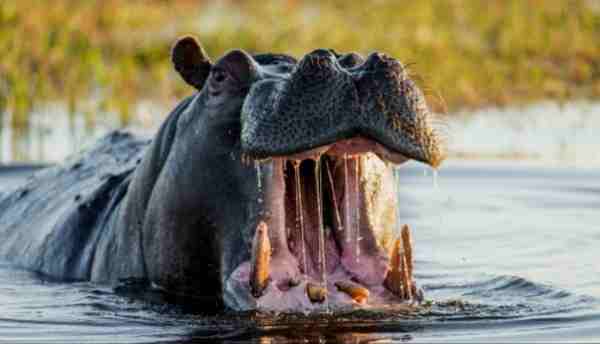
Scientific Name: Hippopotamus Amphibius
Diet: Herbivore
Fang size: 16 inches
Have you ever heard of a herbivore animal with fangs? Meet the hippopotamus! Not only are they the third-largest land animal, but they also have an impressive set of teeth. Their tusks are well-known, but did you know their long teeth in the lower jaw are also referred to as fangs?
These fangs are used for protection and battles against other animals. Hippos are known to be fiercely protective of their territory and babies and will use those powerful fangs to defend themselves. In fact, the hippopotamus has the largest fangs of any land mammal in the world. Fascinatingly, they can be found in various African countries, like Uganda, Tanzania, and South Africa.
Vampire Bats
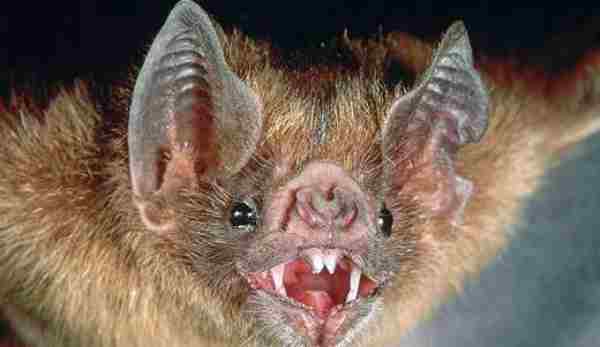
Scientific Name: Desmodontinae
Diet: Sanguivores
Fang size: 0.5 inches
Move over Dracula, the real vampire is in town! While not quite as scary as their fictional counterpart, the vampire bat certainly has a few tricks up its sleeve. These small, blood-sucking creatures prey on a variety of animals, from cows to pigs to birds.
And while their teeth may not actually be fangs, they certainly look the part! But it’s not just their appearance that sets them apart from other bats – vampire bats have a special anticoagulant in their saliva that helps them feed. This silent killer prevents the wound from closing, meaning their prey doesn’t even know it’s being fed upon. So while they may not be transforming into humans, vampire bats are still fascinating and spooky creatures.
Siberian Musk Deer

Scientific Name: Moschus Moschiferus
Diet: Herbivore
Fang size: 4 inches
Among the many species of deer worldwide, the Siberian musk stands out for its unique physical characteristics. While most deer have antlers, the musk deer are equipped with long fangs to help them fend off rivals during mating season. These fangs are a sign of dominance and are used to establish and maintain their territory.
What’s even more intriguing is that these vegetarian creatures survive on a diet of moss, lichen, and other vegetation despite their fearsome appearance. The Siberian musk deer can be found in the coldest parts of the world, including Siberia, the Himalayas, Taiga, and Mongolia.
Black Mambas
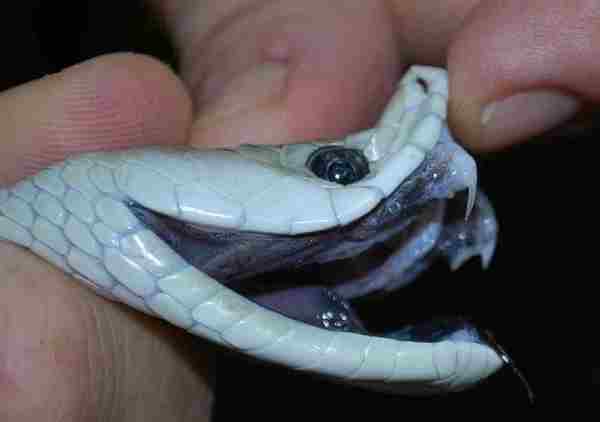
Scientific Name: Dendroaspis Polylepis
Diet: Carnivore
Fang size: 0.26 inches
The black mamba is a force to be reckoned with in the animal kingdom. This snake is not only the second-longest in the world, but it also has the fastest striking skill. Its deadly hunting ability has earned it a reputation as one of the most dangerous animals in the world. Found most commonly in East and South African savannahs, the black mamba has razor-sharp, hollow fangs that deliver a venom deadly enough to kill animals ten times its size.
Lions, tigers, and even elephants have fallen prey to the black mamba. Even baby mambas are not to be underestimated, with their fangs carrying a lethal amount of venom. Within seconds to a minute, the prey of these snakes is dead.
Baboons

Scientific Name: Papio
Diet: Omnivore
Fang size: 2 inches
Baboons may look cute and cuddly, but don’t be fooled – they have some fearsome weapons at their disposal. Their upper and lower jaws boast some truly intimidating fangs, making them one of the animals with the most impressive dentistry. But these fangs aren’t just for show; baboons use them to hunt small prey like lambs, rodents, birds, and even antelopes.
In addition to their hunting abilities, males with long fangs are often perceived as more attractive by females. These long-fanged baboons also use their impressive dental work to assert dominance and are often the leaders of their group. Found mainly in Arabia, Africa, and other regions, all kinds of baboons are part of the Old World monkey family.
Clouded Leopards

Scientific Name: Neofelis Nebulosa
Diet: Carnivore
Fang size: 2 inches
The clouded leopard is a fierce predator that uses its two pairs of powerful fangs for hunting and self-defence. What sets them apart from other big cats is their impressive length in proportion to their size. Not only do these fangs pierce through the skin of their prey with ease, but they also serve as a deterrent for potential intruders and as a means of protecting their territory.
As carnivores, their primary diet consists of macaques, gibbons, wild boars, and small deer. If you want to spot these majestic creatures in the wild, you can find them prowling in southern China, Borneo, Taiwan, Nepal, Bangladesh, and India.
Payaras

Scientific Name: Hydrolycus Scomberoides
Diet: Carnivore
Fang size: 5 to 6 inches
Have you heard of the Payara, also known as the vampire fish? These carnivorous predators are even more dangerous than the infamous Piranha, with their lower jaws lined with large fang-like teeth that they use to catch their prey. Not only do they prey on smaller fish, but they even hunt other fish their own size!
It’s no wonder why they go by other names such as Dracula fish, Wolf-fish, and Sabre-toothed tiger fish. These fearsome creatures are commonly found in the Amazon Basin in South America. Who knew that there could be fish more dangerous than the Piranha? The Payara definitely earns its position as the ultimate predator of the Amazon.
Eastern Diamondback Rattlesnakes
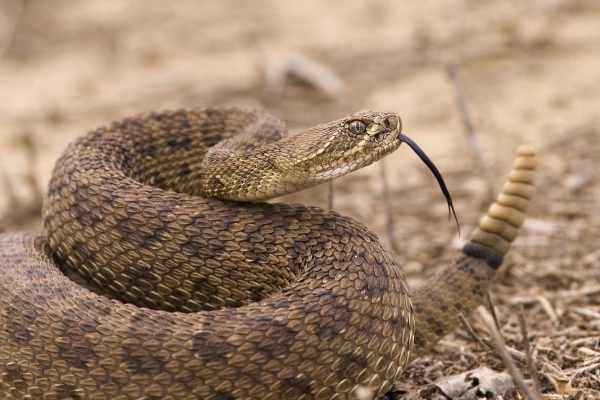
Scientific Name: Crotalus Adamanteus
Diet: Carnivore
Fang size: 1 inch
The eastern diamondback rattlesnake is both feared and respected as the largest rattlesnake in the world. With its curved, hollow fangs, this venomous predator can inject venom into its prey with ease. Its fangs are connected to venom glands, allowing it to immobilize and digest small mammals such as rabbits, rats, squirrels, and birds. Despite the fear that the eastern diamondback may evoke, it is an impressive creature that can retract its fangs inwards and parallel to its mouth roof.
These snakes are commonly found in Southern Alabama, Louisiana, the southeastern United States, Florida, North Carolina, and Mississippi, where they are an integral part of the ecosystem.
Gray Wolves

Scientific Name: Canis Lupus
Diet: Carnivore
Fang size: 1 to 2.5 inches
The gray wolf, also known as the common wolf, is a majestic creature with distinctive colouring. While they have 42 teeth in total, four of them are canines that play a crucial role in the wolf’s hunting strategy. These sharp teeth, particularly the longer ones on the wolf’s upper jaw, allow them to pierce their prey’s skin and prevent them from escaping.
The wolf’s fangs are also strong enough to easily break cartilage and bones in their prey’s throat. It’s no surprise that the gray wolf typically hunts prey such as deer and moose, but they have been known to take down smaller animals as well. While their hunting grounds are dispersed, the gray wolf is mainly found in regions of northern Idaho, northeast Oregon, Alaska, Michigan, Wyoming, and western Montana.
Goliath Birdeater Tarantula Spiders

Scientific Name: Theraphosa Blondi
Diet: Carnivore
Fang size: 2 inches
The Goliath Birdeater is not your average spider. It is the largest and heaviest species of tarantula, and it has the longest fangs compared to other spiders. What’s more, this spider injects its prey with venom and kills it almost instantly. While its venom can break through human skin, it is safer for larger animals.
In fact, humans would only feel as much of a sting as a wasp. Despite its name, the Goliath Birdeater actually eats a variety of creatures, from earthworms to snakes, though it is certainly large enough to feast on birds as well. If you ever find yourself in Brazil, Guyana, northern South America, French Guiana, Venezuela, or Suriname, keep your eyes peeled for this fascinating creature.
Gaboon Vipers

Scientific Name: Bitis Gabonica
Diet: Carnivore
Fang size: 2 inches
The Gaboon viper is a fascinating yet terrifying snake. It is considered one of the most dangerous vipers in the world, second only to the king cobra. With its incredibly long length and impressive fangs, the Gaboon viper’s bite can be fatal to both its prey and humans.
Its venom is incredibly potent, made even more so by its ability to yield a greater quantity due to its lengthy fangs. While the Gaboon viper is a formidable predator that preys on a range of mammals, birds, and rodents, it is best to admire them from a safe distance. These serpents are commonly found in western and central Africa, so if you happen to encounter one, beware!
Dogs
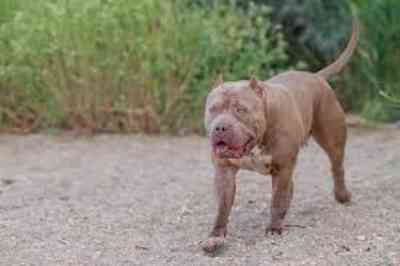
Scientific Name: Canis Lupus Familiaris
Diet: Omnivore
Fang size: 0.3 to 1 inches
For centuries, dogs have been beloved companions to humans, earning their title as ‘man’s best friend’. But did you know that these furry creatures actually descended from an extinct wolf?
Domestication started over 15,000 years ago during hunter-gatherer civilizations, with dogs being the first big carnivores to be tamed. One of their unique features is their impressive set of teeth – a total of 42 in all, including their pointy fangs.
These teeth serve multiple purposes, such as tearing food and holding things, but they also come in handy when it comes to scaring potential enemies. Some breeds, such as German Shepards and Malinois, even have longer fangs than others.
Vampire Deer

Scientific Name: Hydropotes Inermis
Diet: Herbivore
Fang size: 1 to 1.5 inches
If you thought deer were only cute and cuddly, think again. The water deer, also called Chinese or Korean water deer, is a species that is both scary and cute-looking at the same time. Despite its small size, this deer boasts sharp, lengthy canine teeth protruding from its upper jaw, making it quite the intimidating herbivore. These fangs aren’t just for show though.
During mating season, male water deer use them as a way to compete against other males and protect their territory. So, next time you spot a water deer in the southeast, beware of those teeth!
Opossums

Scientific Name: Didelphidae
Diet: Omnivore
Fang size: 0.3 inches
Opossums are fascinating creatures with some unique characteristics that set them apart from other mammals. One of the most remarkable things about them is that they have more teeth than any other land mammal in the U.S. That’s right, these opportunistic omnivores have a whopping 50 teeth, including a couple of pairs of fangs which they use to tear off meat and intimidate predators.
Despite their fierce appearance, opossums are actually quite adaptable and resourceful, known for scavenging food from garbage cans and dumpsters. And if they happen to encounter a predator that’s too big to scare off, they have another trick up their sleeve: playing dead.
King Cobras

Scientific Name: Ophiophagus
Diet: Carnivore
Fang size: 0.5 inches
The king cobra is a fascinating creature that strikes fear in the hearts of many. Known to be the longest venomous snake in the world, this reptile’s most dangerous feature is its long, hollow fangs that are positioned in the upper jaw. The king cobra uses these fangs to inject its deadly venom into its prey, immobilizing them and allowing the snake to devour them whole.
This method of catching prey is highly effective as the prey is killed slowly by the poison, allowing the snake to consume them without much resistance. These fascinating creatures are mainly found in southern China, northern India, the Malay Peninsula, and Hongkong.
Bears
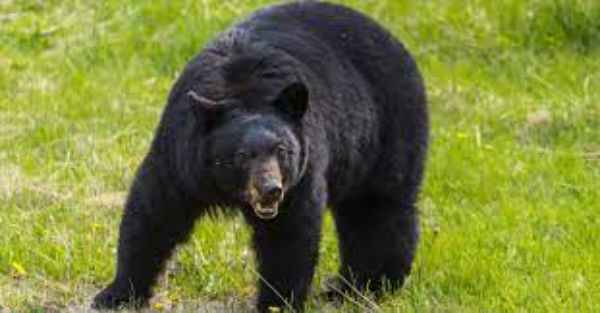
Scientific Name: Ursidae
Diet: Omnivore and Carnivore
Fang size: 1.5 to 3 inches
Bears may not be the first animal that comes to mind when one thinks of fangs, but these enormous creatures certainly deserve a spot on our list. With eight extant species found across Asia, Europe, and North and South America, bears are among the largest mammals on the planet. They are classified as caniforms, with a set of 42 teeth, including formidable fangs that they use primarily for hunting live prey.
Unlike other carnivorous beasts such as big cats or canines, bears do not bare their teeth when feeling defensive. Instead, they reserve their fangs for the hunt, piercing through the skin of their unfortunate prey. While the length of their fangs varies between species, it is not uncommon for an adult bear to grow three-inch-long fangs.
FAQs
What animals have fangs?
When it comes to animals with fangs, there are a variety of species that come to mind. Perhaps the most iconic are the large cats like lions, tigers, and leopards, whose sharp teeth are perfect for tearing through the meat. However, many smaller mammals also have fangs, such as the venomous platypus and the fearsome Tasmanian devil. Even some reptiles, such as snakes like the venomous king cobra and many species of lizards, use their fangs to capture prey.
What animal has big fangs?
When it comes to animals with big fangs, there are a few contenders that come to mind. One of the most well-known animals with impressive fangs is the snake. Depending on the species, snakes can have fangs that are quite long and sharp, used for injecting venom into their prey. Another animal with fearsome fangs is the tiger. These big cats have razor-sharp teeth that can grow up to three inches long, making them perfect for taking down large prey.
What is the list of fangs?
While snakes might be the first that comes to mind, they aren’t the only ones with sharp, pointy teeth. Spiders, such as tarantulas, also sport fangs that help them catch and eat their prey. Bats, known for their love of blood, have tiny fangs that allow them to pierce the skin of their prey and drink their fill. And of course, we can’t forget about the kings of the jungle – lions. With their impressive canines, lions use their fangs to take down prey much larger than themselves.
Do all mammals have fangs?
Many mammals, such as big cats like lions and tigers, are infamous for their sharp, pointed fangs. However, not all mammals have fangs. In fact, many mammals have teeth that are significantly different from fangs.
Final Words
The wilderness is home to a variety of fascinating creatures, especially those with fangs. However, these pointed teeth serve different purposes among the different animals. Predators rely on their fangs to chase down prey and ensure their survival, while others with more defensive needs use their sharp teeth for protection. But what about herbivores that possess fangs?
These creatures often use their fangs to assert dominance during mating rituals. The sight of these animals with their impressive fangs is a remarkable sight to behold, highlighting the diversity and complexity of the animal kingdom.
Reference:
- https://www.centralfloridazoo.org/animals/gaboon-viper
- https://www.allaboutbirds.org/news/do-birds-have-teeth/
- https://nationalzoo.si.edu/animals/gaboon-viper

Jeevan Kodiyan
An animal enthusiast with an interest in zoology, studying the behavior and activities of animals in the wild habitat. I work on research projects related to species conservation and endangered species protection. I also leverage zoology to become an educator, educating others about the importance of protecting our natural environment and the beauty of animals in their natural habitats.









